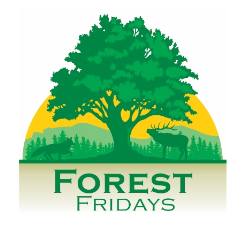By Jeff Woleslagle
Spring is most certainly in the air, and with it, the bluebirds that use the nesting box in our tree row have turned their attention to their first clutch.
When we think of cavity nesters, we primarily think of birds, but any species that builds a home and raises young in sheltered chambers or cavities can be a cavity nester. By some estimates, dead trees and trees that contain decaying wood provide important habitat for about 25 percent of the forest wildlife species in the northeastern United States.
I can vividly recall an archery hunt for deer when I climbed up a tree in the early morning darkness. As the sun rose, I found myself at eye-level with a hole in the tree beside me that was about the circumference of a pie plate. I could clearly see a ball of fur in the cavity but had no idea what it was. Just before dark, a raccoon’s face poked out and it studied me carefully before it finally climbed down to forage for the evening.
About 85 species of birds in North America are considered cavity nesters. Many of these species get a jump start on open-nesting birds due to the protection from the elements that cavities provide. Cavity nesters also have a reduced risk of predation when compared to open nesters. Some predators, though, such as black rat snakes, frequently raid bluebirds’ and other’s nesting boxes.
Squirrels are common cavity nesters as well. I once discovered a nest of flying squirrels near one of my favorite hunting spots and I thoroughly enjoyed watching them emerge each evening, even though I knew it meant the end of a day spent in the woods.
Forestry professionals know how important cavities and snags (standing dead trees) are and the many species that benefit from them. Now is the perfect time to educate others about them and maybe even construct a few new nesting boxes for your own neck of the woods.
Keep an eye out for cavity critters as you begin to explore the PA Wilds. Plan your Journey today on PA Wilds.com!
About the Author
Jeff Woleslagle is a 1992 graduate of Penn State University with a bachelor’s degree in Wildlife and Fisheries Science. After college he worked on various research projects for the U.S. Forest Service, U.S. Fish and Wildlife Service, the University of Montana, Minnesota Department of Natural Resources, and the Pennsylvania Game Commission. He came to the Pennsylvania Department of Conservation and Natural Resources in 1999 and has worked as a park ranger, forest ranger and Environmental Education Specialist prior to becoming the Bureau of Forestry’s Chief of Communications. He is a member of the Board of Directors of the Pennsylvania Outdoor Writers Association and an active member of the Outdoor Writers Association of America. Jeff resides in Duncannon, Pennsylvania with his wife Jodi and has two children, Alayna and Nathan. He enjoys hiking, kayaking, reading, hunting and fishing. This article was originally written for the Bureau of Forestry’s “Forest Fridays” newsletter.



